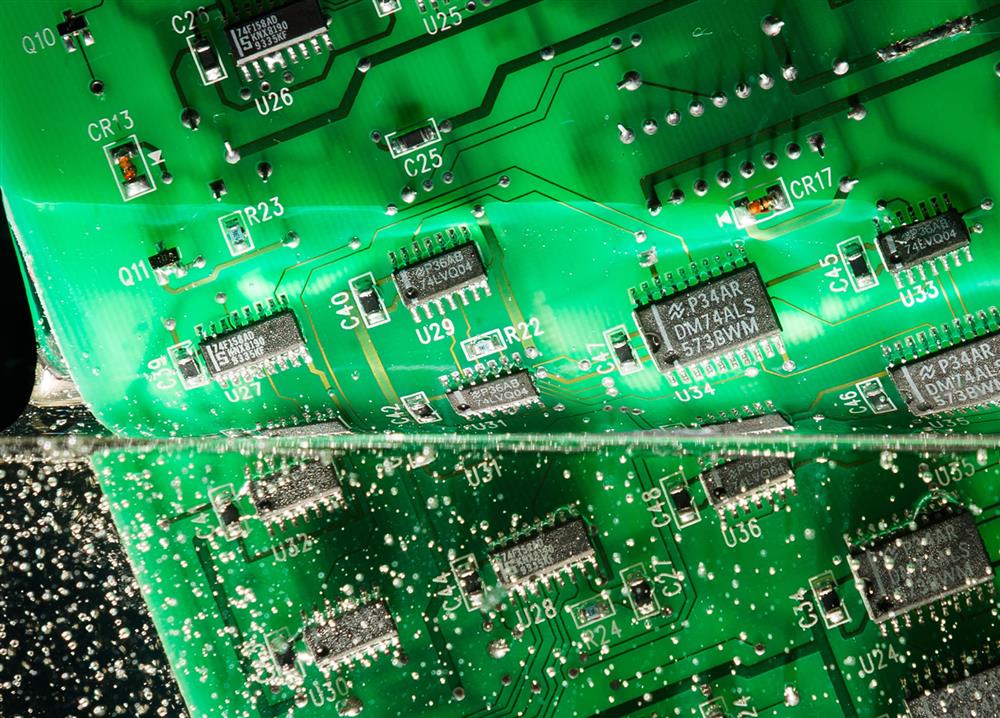What is Conformal Coating?
Conformal coatings are polymeric films applied directly to PCBAs and electronic components to provide a layer of protection from the environment in which they operate.
Why do we need to remove conformal coating?
From time to time, conformal coatings must be removed. This can be due to a variety of reasons, including electrical or functional failures requiring rework, PCBA malfunctions, initial design process problems, poor adhesion, protective coating defects, or the wrong choice of coating materials. The first step in removing conformal coating is to identify the type of coating it is.
What are the different types of conformal coating?
Coatings are designated as AR (Acrylic Resin), SR (Silicone Resin), UR (Polyurethane Resin), ER (Epoxy Resin) and XY (Parylene). Learn more about the different types of conformal coatings here. Each material has its own advantages, limitations, challenges, application, and removal methods. These coatings can be categorized into two categories: those that can be removed by solvents and those that cannot.
How to identify the types of Conformal Coating?
Labels may be present on the assembly that conform to standards such as IPC-1066 and IPC/JEDEC J-STD-609 that can easily tell us which type of conformal coating was used.
However, if the label is not visible or available, observation and testing can identify the coating characteristics enough to select the proper removal process. The following approaches will help with identification:
- Hardness: Perform a penetration test on a non-critical area. If it is medium hard or soft, it is suitable for chemical solvents. Hard coatings cannot be removed by chemical solvents.
- Transparency: Transparent coatings are usually easier to remove than opaque coatings.
- Solubility: Coat with isopropyl alcohol in a small non-critical area and observe. Do not immerse PCBs in harsh solvents during testing; some solvents can damage components.
- Visual Inspection: Examine or use small tools to determine if the surface is glossy or matte, if it adheres strongly to the PCB, and if it tends to chip, peel or flake, scratch or crack.
In addition to identifying coating characteristics, there are also ways to identify different types of coatings:
- Acrylic Resin (AR) – Glossy surface, reacts to heat, strong bond, and readily dissolves with common solvents.
- Silicone Resin (SR) – Semi-gloss rubbery surface, and soft easily scraped off.
- Polyurethane resin (UR) – Glossy hard surface that is more solvent resistant than AR.
- Epoxy Resin (ER) – Glossy hard surface that is solvent resistant.
- Parylene (XY) – Matte hard surface that is solvent resistant. Because it is applied by vapor deposition, it will be much more even over all surfaces and component corners.
Determining the Best Way to remove Conformal Coating
Once you have identified your protective coating, you can assess which removal method to use. Many common protective coatings require chemical solvents either alone or in conjunction with another removal method.
Here are 5 main ways to remove Conformal Coating:
- Chemical Solvent – Best for AR, SR and UR coatings.
- Peeling – Best for thick SR.
- Thermal – Good for all coatings except thick SR.
- Grinding/Scraping – Best for XY, EP, UR, and thick SR.
- Micro Blasting – Best for XY and EP.
EXCEPTIONS AND CONSIDERATIONS
Assess printed circuit boards on a case-by-case basis, considering board type, sensitivity, and components. Critical elements require robust quality control, and new boards may be safer for final installation. Chemical solvents are the best universal method for removing coatings in acrylic, silicone, and urethane, as they prevent stress from thermal or abrasive methods. As an industry leader for 60 years, Techspray offers both expertise and two leading products for these applications: Fine-L Kote Coating Remover and Fine-L-Kote Coating Remover XT.
In our next article, we will take a look at how chemical solvents work in removing conformal coatings.

